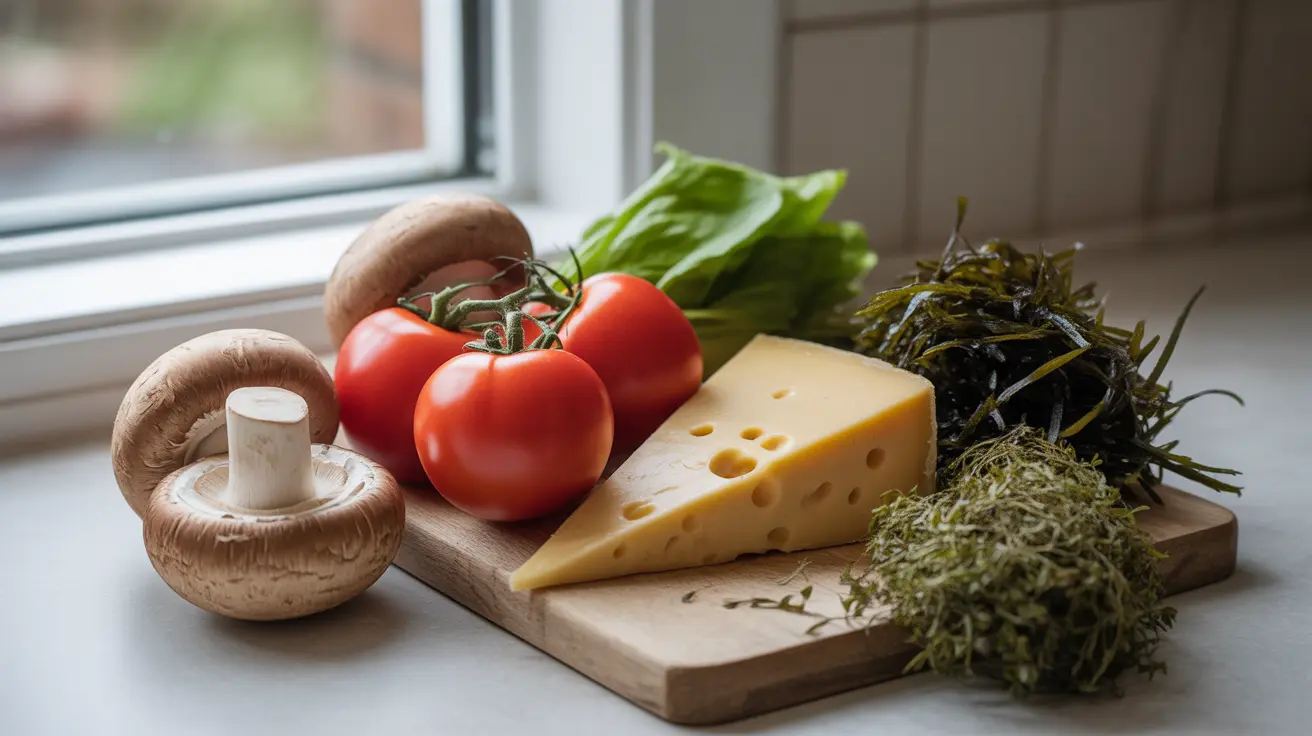Monosodium glutamate (MSG) is a flavor enhancer that appears in both natural and processed foods. Understanding where MSG occurs naturally and where it's commonly added can help you make informed decisions about your diet. This comprehensive guide explores the various sources of MSG and what you need to know about its presence in your food.
Natural Sources of MSG in Foods
Many common foods contain naturally occurring MSG, often contributing to their savory or umami flavor profile. These natural sources include:
- Tomatoes
- Aged cheeses (particularly parmesan)
- Mushrooms
- Seaweed
- Fish sauce
- Soy sauce
- Green tea
- Corn
- Peas
- Human breast milk
The MSG in these foods exists as part of their natural protein composition and has been consumed safely for centuries as part of traditional diets worldwide.
Understanding MSG on Food Labels
When reading food labels, MSG might appear under various names. Common designations include:
- Monosodium glutamate
- E621
- Glutamic acid
- Glutamate
- Yeast extract
- Hydrolyzed protein
- Autolyzed yeast
- Modified food starch
Manufacturers must list MSG in the ingredients when it's added as a direct ingredient. However, some ingredients naturally high in glutamates may not specifically mention MSG content.
Common Processed Foods Containing Added MSG
Many processed and packaged foods commonly contain added MSG as a flavor enhancer. These include:
- Flavored snack chips
- Instant noodles and soups
- Processed meats
- Frozen meals
- Seasoning blends
- Asian-style condiments
- Bouillon cubes and stock
- Some salad dressings
- Fast food items
Safety and Health Considerations
The FDA has classified MSG as "generally recognized as safe" (GRAS). However, some individuals report sensitivity to MSG, experiencing symptoms such as:
- Headaches
- Flushing
- Sweating
- Chest pain
- Nausea
While research hasn't conclusively proven MSG sensitivity, some people choose to limit their intake out of caution. It's important to note that naturally occurring MSG typically doesn't cause the same concerns as concentrated, added MSG.
Tips for Reducing MSG Intake
If you're looking to minimize MSG consumption, consider these strategies:
- Cook meals from scratch using whole ingredients
- Choose fresh produce over processed alternatives
- Read labels carefully before purchasing packaged foods
- Use natural flavor enhancers like herbs and spices
- Opt for MSG-free versions of common products
- Prepare homemade broths and stocks
Frequently Asked Questions
What foods naturally contain monosodium glutamate (MSG)?
Natural MSG is found in tomatoes, aged cheeses, mushrooms, seaweed, and various fermented products. These foods contain glutamates as part of their protein structure, contributing to their natural umami flavor.
How can I identify MSG on food labels, and what are common synonyms for it?
Look for terms like monosodium glutamate, E621, glutamic acid, yeast extract, hydrolyzed protein, and autolyzed yeast. These ingredients indicate the presence of MSG or glutamates in the product.
What are some common processed foods that typically contain added MSG?
Added MSG is common in flavored snacks, instant noodles, processed meats, frozen meals, seasoning blends, and various Asian-style condiments. Fast food restaurants may also use MSG in their preparations.
Is MSG safe to consume, and what are its potential health effects?
The FDA considers MSG generally safe for consumption. While some people report sensitivity symptoms, scientific research hasn't definitively proven MSG sensitivity. Most people can consume MSG-containing foods without adverse effects.
How can I avoid or reduce my intake of MSG in my diet?
To reduce MSG intake, cook with whole ingredients, read food labels carefully, choose fresh produce over processed foods, and use natural seasonings like herbs and spices. Making homemade broths and avoiding heavily processed foods can significantly reduce MSG consumption.




